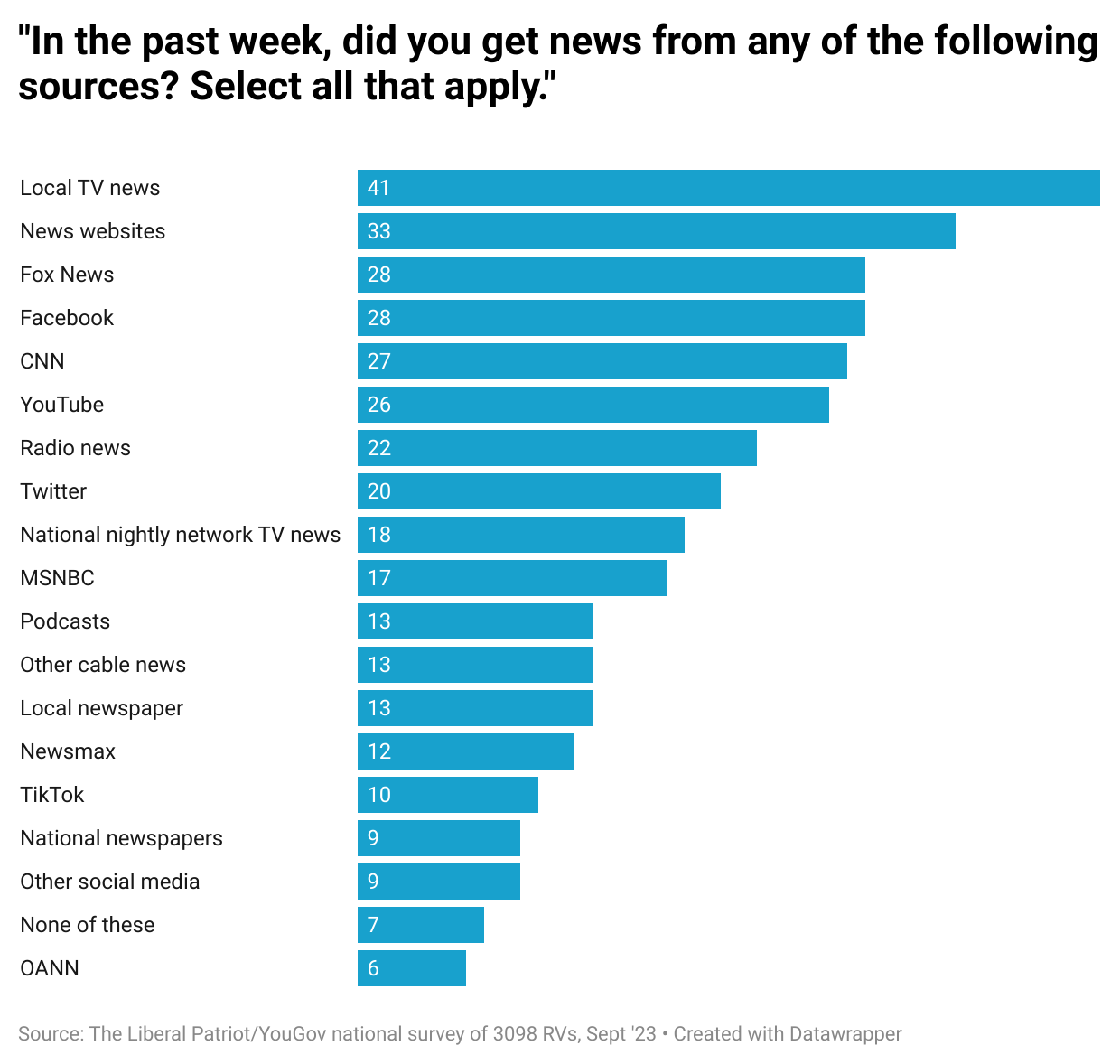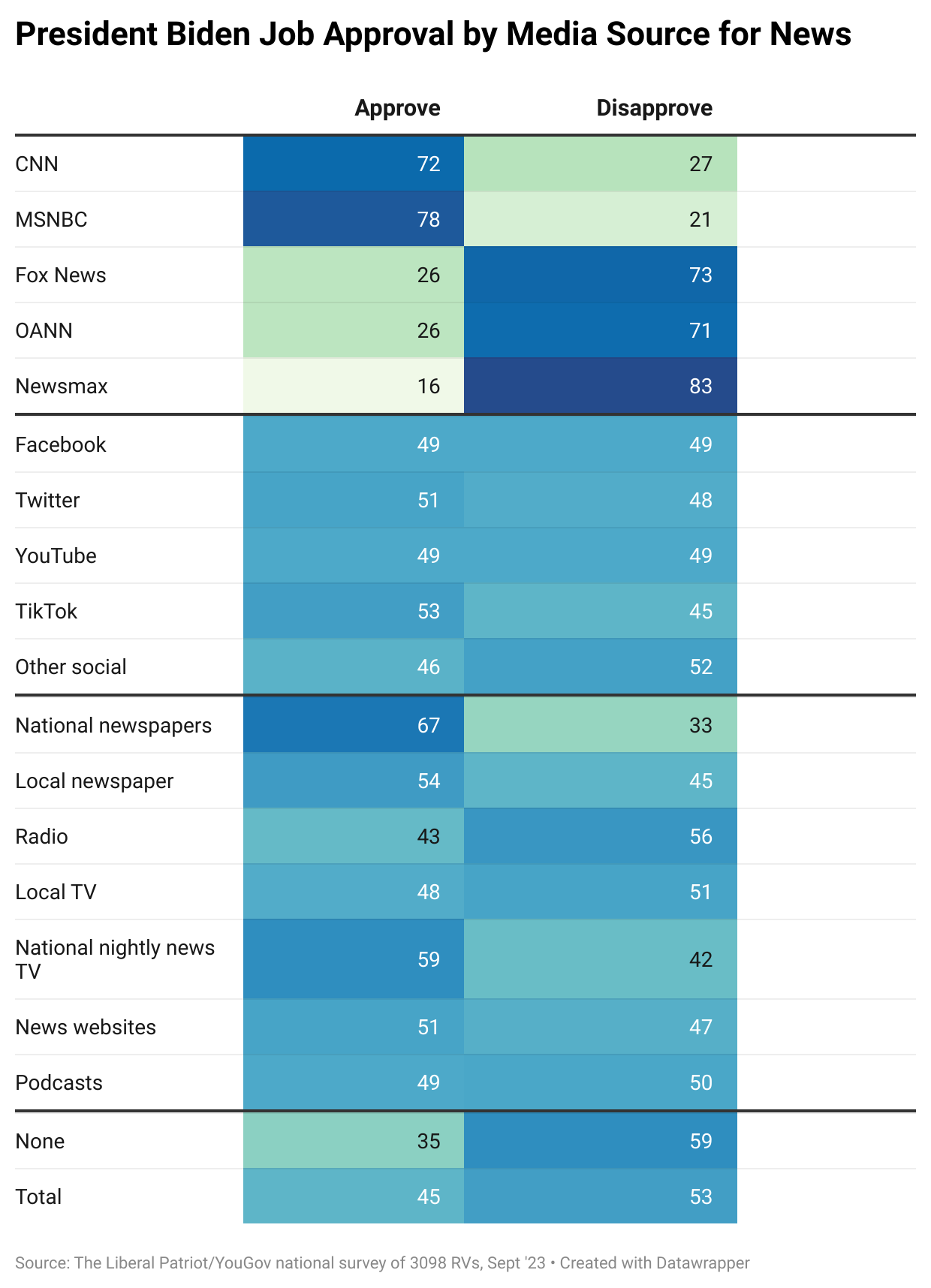The following article by Ruy Teixeira, senior fellow at the American Enterprise Institute, politics editor of The Liberal Patriot newsletter and co-author with John B. Judis of the new Book “Where Have All the Democrats Gone?,” is cross-posted from The Liberal Patriot:
Let’s face it: the Democratic coalition is in poor shape. It’s springing leaks everywhere—young voters, Hispanic voters, black voters, women voters, working-class voters, moderate and independent voters. Of course, some Democrats dismiss the accumulating evidence as irrelevant because it’s too early, too biased, or not consistent with recent positive election results. It reminds me of the widely shared meme of the anthropomorphic dog calmly sipping his coffee in a burning room saying: “This is fine.”
And for sure, it is early. But these are very disturbing data that indicate the scale of the Democrats’ challenge in 2024. Two recent data releases document this ongoing decay of the Democratic coalition. First, looking at the national picture, Adam Carlson at the excellent Split Ticket data analytics site, has produced a compilation of cross-tabular data that allows us to compare average current Democratic performance with Democratic performance from 2020 to estimate shifts in preference since that election by key group. The second data source is a major survey of battleground states and districts by Democracy Corps/PSG/Greenberg Research (DCorps) that provides some rich demographic breakdowns of vote preference and opinion where the 2024 election will almost certainly be decided.
The Democratic “base” as a whole. This group isn’t in the Split Ticket data, but is displayed in the DCorps battleground data. In their definition the Democratic base is an amalgamation of Democratic-friendly demographic groups: “Blacks, Hispanics, Asians, LGBTQ+ community, Gen Z, millennials, unmarried and college women”. Overall, across this constellation of groups, Biden trails Trump in the presidential battleground by 4 points—no better for Biden than among all voters in the battleground.
These base voters also give Trump a higher approval rating than Biden; three-quarters think the country is off on the wrong track. Their most pressing issue by far for the country is inflation and the cost of living. Crime, homelessness and violence is second while, interestingly, abortion only ranks eighth.
Young voters. The Split Ticket data show Biden carrying 18-29 year olds (primarily Gen Z) by 16 points, a 7-point pro-Trump shift relative to 2020. (Note: where Catalist data are available, I use their data alone, rather than averaged with AP/Votecast and Pew validated voter data as Split Ticket does.) Among 30-44 year olds (primarily Millennials), Biden is ahead by only 8 points, a 6-point pro-Trump shift compared to 2020.
The DCorps battleground data suggest the situation may be particularly dire with white Gen Z and Millennial voters. Trump is 28 points ahead of Biden among white Gen Z voters in the presidential battleground and 25 points ahead among white Millennials. Their most pressing issue by a wide margin is inflation and cost of living. Among white Gen Z voters, Biden’s approval rating is 27 percent compared to 59 percent (!) for Trump; among white Millennials, Biden’s rating is 33 percent while Trump’s is 60 percent.
Hispanic voters. The measured pro-Trump shift here is particularly startling. Biden’s average lead among Hispanics is a mere 5 points, an 18-point decline from his lead in 2020. And in the DCorps presidential battleground data, Biden is actually behind among these voters by 3 points. Battleground Hispanics’ key issue is inflation and the cost of living, followed by crime. They give Trump and Biden exactly equal approval ratings.
Black voters. In the Split Ticket data, Biden is averaging a 52-point lead among black voters. That may sound good but it actually represents a precipitous 29-point drop from Biden’s 81-point lead in 2020. It seems hard to believe that Biden will ultimately drop that much support from black voters but even half that drop would be disastrous for him.
The DCorps presidential battleground data confirm this relatively weak black support for Biden. Interestingly, while inflation and the cost of living is these voters’ top issue, as it is for most other groups, crime is actually very close behind, much closer than among other groups. Consistent with this, black battleground voters are most likely to pick “crime and homelessness being out of control in cities and the violence killing small businesses and the police” as something that would upset them the most if Biden was re-elected.
Women voters. The Split Ticket data show Biden’s average lead among women voters at 6 points, down 7 points from his 2020 showing. This shift is actually slightly larger than the pro-Trump shift among men at this point.
The DCorps presidential battleground data indicate particular problems among white unmarried women (25-point Trump lead) and white working-class (noncollege) women under 50 (47-point Trump lead). These two groups of women are by far the most worried about inflation and the cost of living. Both groups of women give Trump higher approval ratings than Biden. The under 50 white working class women, in fact, give Biden an abysmal 16 percent approval rating compared to 57 percent for Trump.
Working-class voters. The Split Ticket data show Trump averaging solid leads among both high school or less (15 points) and some college (9 points) voters. These leads represent, respectively, a 5-point and a 7.5-point shift toward Trump relative to 2020.
In the DCorps data, Trump has an amazing 21-point lead among the working class as a whole in the battleground states and districts. And that’s 63 percent of the voters in these areas—the areas that, as noted, will decide the outcome in 2024.
Independent and moderate voters. The Split Ticket data show Trump leading Biden by 6 points among independents, a 15-point turnaround from Biden’s 9-point lead in 2020. Biden currently leads by 14 points among moderate voters, which sounds OK, but is actually a 12-point decline from his lead in 2020. And in the DCorps presidential battleground, Trump leads independents by a healthy 18 points.
It no doubt seems odd to Democrats that voters in the center—independents and moderates—aren’t flocking to their banners because surely they all know and believe that chaos agent Trump and his anti-democratic Republican Party represent everything that is immoderate and super-partisan in American politics.
But here’s the problem: these voters don’t necessarily see Trump and the Republicans as clearly being the worst in these areas. In the DCorps poll, battleground voters prefer Trump and the Republicans over Biden and the Democrats on “opposing extremism” (by 3 points), “getting beyond the chaos (by 6 points), “standing up to elites” (by 8 points), “protecting the U.S. Constitution” (by 8 points), and “putting country over party” (by 8 points). These voters see the parties as tied on “democracy being secure”and give Biden and the Democrats negligible leads of 2 points on “presidents not being able to act as autocrats”, and one point on “protecting democracy”. So while partisan Democrats may think these issues are not even close when comparing Biden and the Democrats to Trump and his “semi-fascist” Republican Party, there are clearly huge numbers of less partisan voters who disagree.
Similarly, in a recent Morning Consult poll, voters deemed the Democratic Party more ideologically extreme than the Republicans by 9 points. And in a poll conducted by The Liberal Patriot and YouGov, more voters thought the Democrats had moved too far left on cultural and social issues (61 percent) than thought the Republicans had moved too far right on these issues (58 percent).
Something’s clearly not working here for the Democrats. Despite turning it up to 11 on the threat posed by Trump to democracy throughout Biden’s presidency, and now perhaps to 12 as the probability of a Biden-Trump rematch looms ever larger, actually-existing voters don’t seem to be stampeding in their direction. The big lead that Democrats feel should be naturally theirs is not appearing.
To me, this raises the question: where is the popular front against Trumpism? If he is indeed as bad as most Democrats seem to believe—i.e., we’re one step away from fascism, it’s Weimar Germany 1932 all over again—shouldn’t Democrats be casting the net as wide as possible, compromising on anything and everything to make their party maximally accessible to persuadable voters? After all, we’ve got to stop fascism here!
But that’s not what’s happening. Despite their dire assessment of the threat posed by Trump, moves to compromise on contentious issues that persuadable voters care about are few and far between. Look what’s happening with the immigration issue that has come to the fore in the negotiations over aid to the Ukraine and Israel. Instead of eagerly embracing a deal to move the aid forward that would include fairly modest reforms to the asylum system and other changes to tighten border security, Democrats are evincing the greatest reluctance to make such a deal. And this is despite the reality that voters, including most persuadable voters, view the Democrats as absolutely abysmal on the issue of border security.
It’s hard to understand. And the great irony here is that progressive Democrats, who are precisely the ones who are most hysterical about the threat posed by Trump and Trumpism, are also the ones most adamantly opposed to making any compromise on border security as part of this deal. Or really anything else for that matter.
This is not a recipe for success. I suppose that’s because they don’t really want a popular front against Trumpism but rather a popular front for all the stuff they feel comfortable supporting. But that’s not how a popular front works and it’s certainly not how Democrats are going to rebuild and expand their coalition for 2024. Instead, such a sectarian approach simply enhances the very real possibility that Donald Trump will (gulp) win next November.





